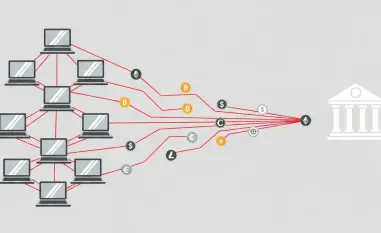The New York Department of Financial Services (DFS) has issued new guidance highlighting the dual role artificial intelligence (AI) plays in modern cybersecurity. This guidance is crucial as it emphasizes pre-existing cybersecurity rules rather than introducing new regulations. It aims to help businesses mitigate AI-driven cyber threats while optimizing AI’s benefits. Alongside elevating security measures, AI’s rapid advancements have simultaneously paved the way for increased sophistication in cyberattacks, making it critical for organizations to adapt promptly.
The Dual Role of AI in Cybersecurity
Leveraging AI for Defense
AI has the potential to transform cyber defense strategies significantly by automating threat detection and incident response processes. Standards can be raised by incorporating advanced machine learning models that analyze vast amounts of data rapidly, identifying anomalies and potential threats in real-time. Organizations leveraging AI tools can thus enhance their security protocols, allowing for quicker and more accurate responses to cyber threats. However, the application of AI in cybersecurity doesn’t stop at threat detection.
Moreover, AI’s predictive capabilities are becoming increasingly valuable, providing a layer of foresight that traditional methods cannot offer. Predictive analytics can flag potential vulnerabilities before they are exploited, enabling proactive rather than reactive measures. While the potential benefits are substantial, realizing these capabilities necessitates comprehensive planning and robust technical expertise. Without such preparedness, the same advanced technology that fortifies defenses could inadvertently introduce new risks.
Growing Risks of AI-Enhanced Attacks
Equally compelling, however, is AI’s role in amplifying the threat landscape. Cybercriminals are harnessing AI to conduct more sophisticated and rapid attacks than ever before. The same attributes that make AI a formidable defense tool also make it a potent weapon in a cybercriminal’s arsenal. Malicious actors utilize AI for automated spear-phishing campaigns, which are far more personalized and harder to detect. These AI-enhanced methods employ machine learning algorithms to bypass traditional cybersecurity defenses.
The concern extends to the increasing accessibility of AI tools, lowering the entry barrier for less-skilled hackers. Techniques such as automated malware development and AI-driven social engineering attacks are readily available, thus escalating the scale and complexity of cyber threats. This phenomenon pressures organizations to continuously innovate their security measures. Organizations need to stay ahead of these evolving threats by integrating AI in both strategic defenses and constant vigilance against its misuse.
Key Recommendations for Businesses
Assessing AI-Related Risks
In light of these challenges, the DFS stresses the importance of risk assessment related to AI within businesses. Each organization must thoroughly evaluate how AI influences their specific operations, including identifying vulnerabilities introduced by new AI technologies. This assessment is essential to align cybersecurity strategies with the evolving risk landscape. By understanding their unique risk profiles, businesses can tailor their defenses effectively, ensuring that AI serves as an asset rather than a liability.
An integral part of this process involves scrutinizing vendors who use AI and ensuring their cybersecurity practices meet established standards. Continuous monitoring and auditing vendors is necessary to ensure compliance and safeguard against supply chain vulnerabilities. It is not just about internal policies but also about holding external partners accountable. This holistic approach is vital for creating an impenetrable defense framework that mitigates risks posed by AI.
Implementing Robust Security Measures
The DFS advises businesses to adopt detailed and robust security measures to counter AI-driven cyber threats. These include implementing multifactor authentication, which acts as a critical barrier against unauthorized access to sensitive data. Limiting access based on roles ensures that only authorized personnel can reach critical information, significantly reducing the risk of internal breaches. Furthermore, active monitoring systems must be set up to detect unusual activities promptly, such as suspicious queries and potential data misuse.
Another key recommendation is mandatory staff training focused on understanding AI-driven threats such as deepfakes and how to respond to them. Employee awareness is paramount in recognizing and mitigating these sophisticated threats. Data minimization strategies are also recommended, aiming to reduce exposure by storing only essential data. Should a breach occur, these strategies limit the extent of compromised information, thereby minimizing damage. These comprehensive measures are crucial in fortifying defenses against increasingly complex AI-enhanced attacks.
Conclusion
The New York Department of Financial Services (DFS) has recently issued new guidance that underscores the dual role of artificial intelligence (AI) in today’s cybersecurity landscape. This significant guidance does not introduce new regulations but rather emphasizes the importance of adhering to existing cybersecurity rules. It aims to assist businesses in mitigating AI-driven cyber threats while also leveraging AI’s substantial benefits. The guidance is timely, as the rapid advancements in AI have not only enhanced security measures but also increased the sophistication of cyberattacks. This dual nature of AI makes it imperative for organizations to stay agile and adapt their cybersecurity strategies promptly. Furthermore, the DFS’s recommendation is a proactive measure to ensure that while AI contributes positively to enhancing operational efficiency and security, businesses are also vigilant about the emerging risks associated with AI technology. By following the DFS’s guidance, companies can better navigate the complex landscape of modern cybersecurity, ensuring robust protection against evolving threats while maximizing the advantages AI offers.













